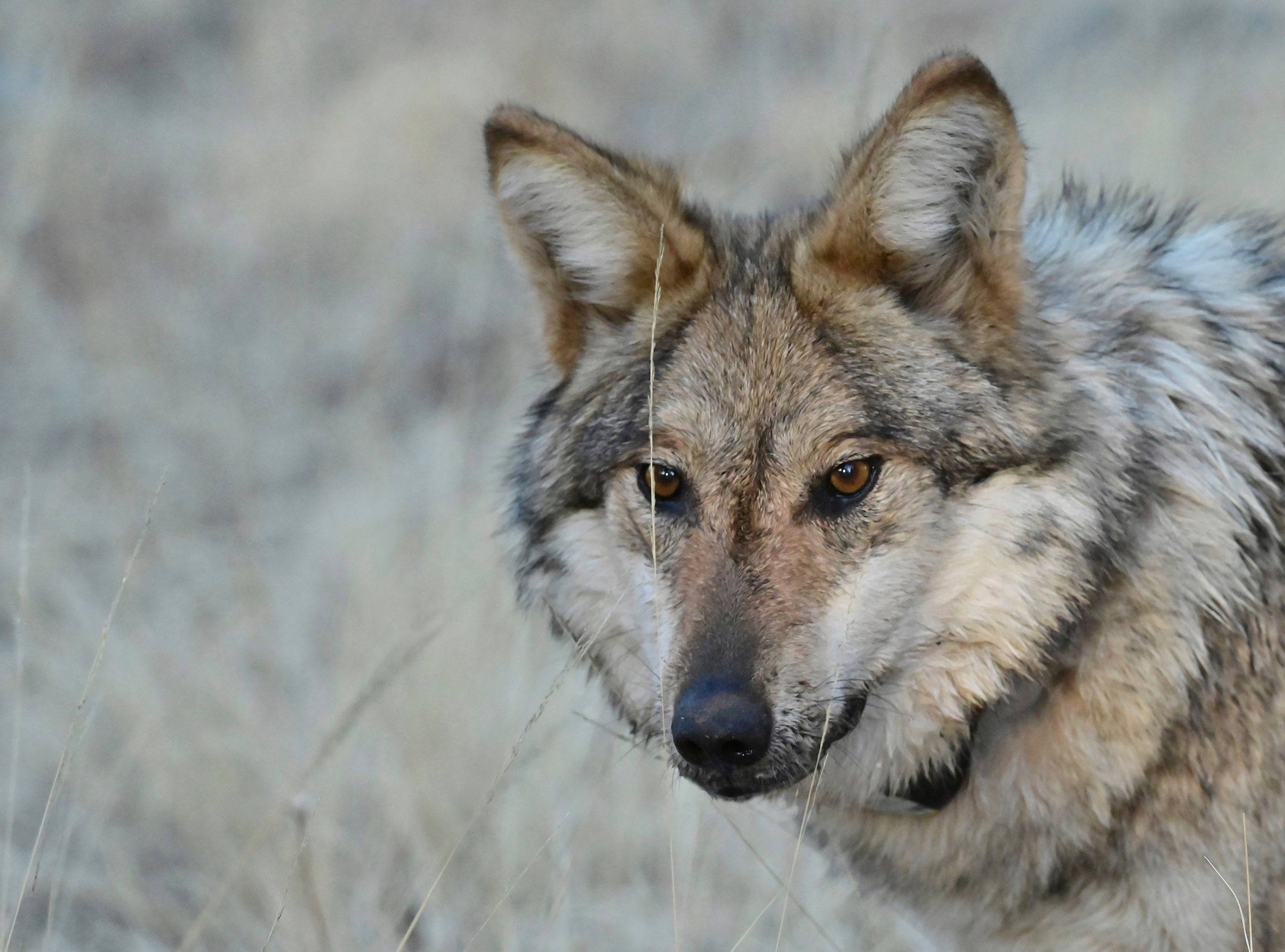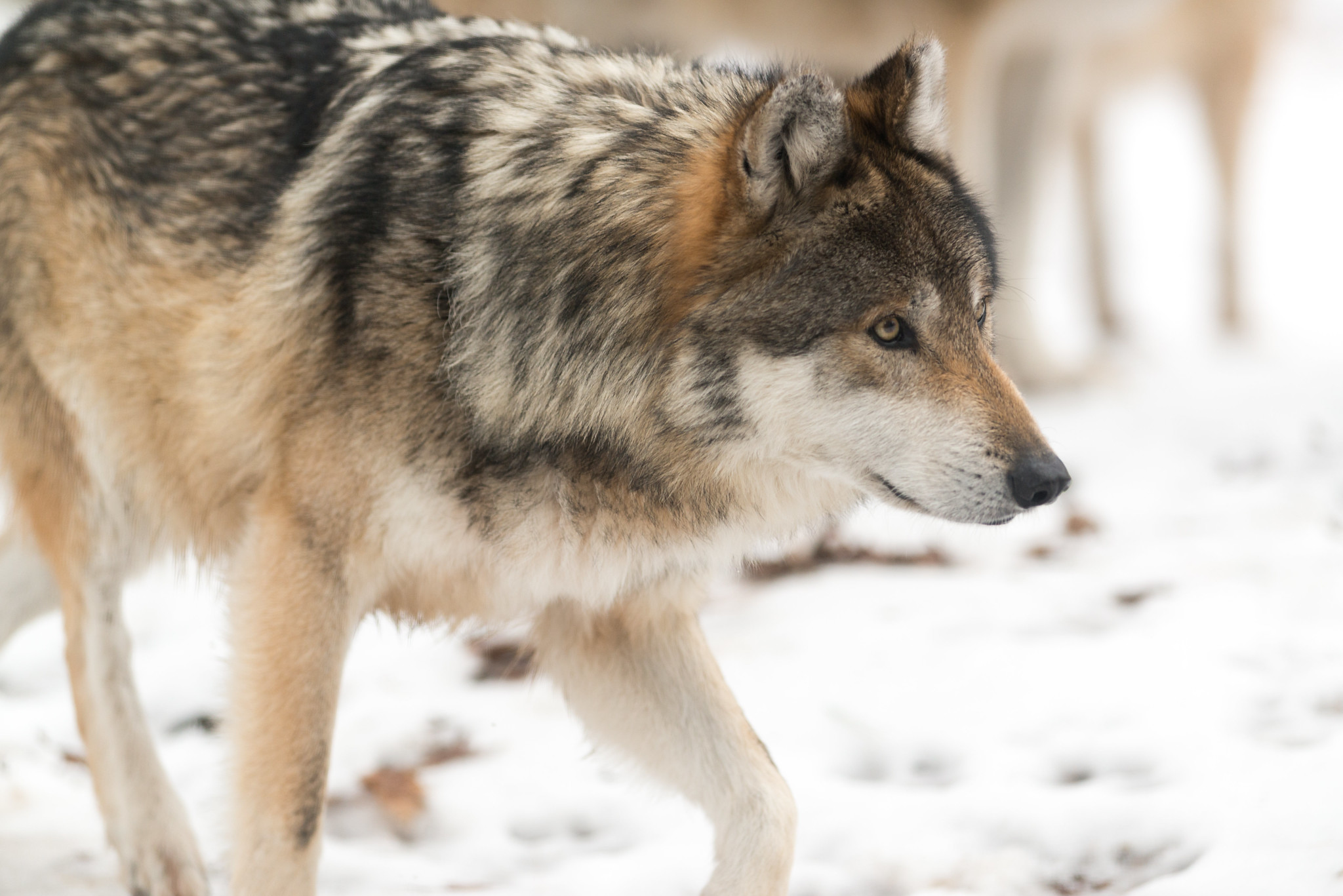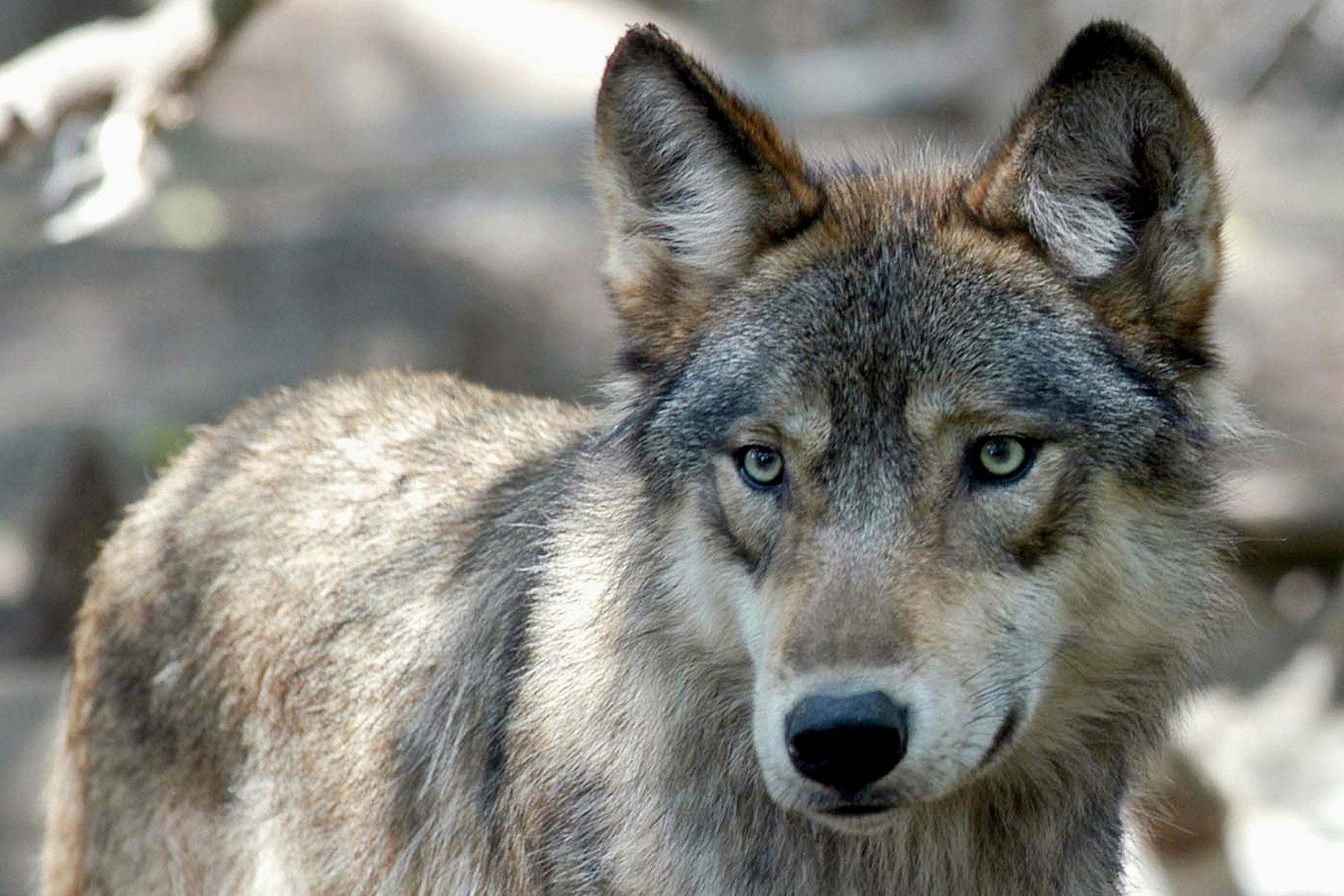With a majority of new members, the policy-setting board for the Wisconsin Department of Natural Resources unanimously approved the agency’s contentious wolf management plan Wednesday.
While it is supported by conservation and environmental groups, the plan has drawn criticism from GOP lawmakers over its lack of a statewide population goal.
Last week, Senate Republicans advanced a bill that would force the agency to set a statewide target for wolves on the same day they fired four of Gov. Tony Evers’ appointees to the board. Evers immediately appointed four new members to the board, which signed off on the plan Wednesday with minor changes to harvesting wolves in one subzone.
News with a little more humanity
WPR’s “Wisconsin Today” newsletter keeps you connected to the state you love without feeling overwhelmed. No paywall. No agenda. No corporate filter.
The last wolf plan approved in 1999 and revised in 2007 set a population goal of 350 wolves. DNR data shows the animal’s population has grown to nearly 1,000 wolves and appears to be stabilizing.
The DNR said its plan would provide more flexibility in managing wolves if they’re delisted as an endangered species. The plan aims to maintain numbers between 800 and 1,200 wolves.
DNR Large Carnivore Specialist Randy Johnson told the board the range gives opposing sides reassurance that the agency isn’t looking to drastically increase or reduce the population. He added the plan sets a solid scientific foundation that would give federal wildlife regulators confidence in the state’s ability to manage wolves if the animal is delisted.
Opponents say wolf population goal should stay at 350
Some hunting and farm groups expressed opposition to the plan, including the Wisconsin Farm Bureau Federation. Tyler Wenzlaff, the federation’s national affairs director, said the DNR’s population range only serves as guidance and could be disregarded at any time. The federation, along with Kansas-based Hunter Nation, want to see the state maintain its existing goal of 350 wolves in order to reduce wolf conflicts with livestock and hunting dogs.
“This is a goal. It’s not a cap,” Wenzlaff said. “It is something that we can get to over a number of management seasons.”
DNR data shows a tiny fraction of Wisconsin’s more than 64,000 farms have been affected by wolf depredations, with only 18 farms affected during the most recent monitoring period. The Milwaukee Journal Sentinel reported that’s the lowest number of farms with wolf conflicts in 15 years. The Associated Press reported the DNR has recorded 67 confirmed or probable wolf attacks on domestic animals so far this year, up from 49 in 2022.
Chris Vaughn, Wisconsin state director of Hunter Nation, said the group would recommend a quota of up to 450 wolves if the wolf is delisted. It’s currently illegal to kill or hunt wolves after a federal judge restored protections last year. State law mandates a wolf season when the animal isn’t listed as endangered.
Some residents like Steve Suchomel of Medford feel the plan discriminates against rural northern Wisconsin residents, saying it’s a safety issue.
“People are afraid to let their children play outside in wolf territory, especially let them play unsupervised in rural areas,” Suchomel said. “People are not hiking without a firearm.”
Cynthia Samels, who lives in the northern Wisconsin town of Iron River, feels otherwise.
“I am out in the woods either in the national forest or public lands almost every weekend either by myself or with my dogs,” Samels said. “I have absolutely zero fear of encountering wolves.”
In its most recent reporting period, the DNR verified two incidents of risks to human safety with wolves observed multiple times during the day near homes. The DNR said there’s never been a documented attack on humans in the state.
A 2022 survey by the DNR shows most Wisconsin households that responded support a population larger than 350 wolves, including in the wolf’s range.
Supporters say DNR plan is a step forward
Animal rights, conservation and environmental groups have said the existing goal of 350 wolves is vastly outdated and not based on the best available science. Sierra Club Wisconsin Director Elizabeth Ward said the revised plan is “a good first step in restoring sustainable management” of wolves.
But Paul Collins, state director for Animal Wellness Action, accused DNR staff and board members of giving more weight to input from hunters, farmers and rural residents.
He said he couldn’t support the plan and its unofficial cap of 1,200 wolves. Collins voiced distrust in the DNR’s ability to enforce its plan after the 2021 wolf hunt. In February that year, hunters killed 218 wolves in under three days. They killed their share and Ojibwe tribes’ portion of a 200-wolf quota.
“I frankly do not have much hope in this agency or trust to make sure that such a slaughter will not happen again,” Collins said.
Wisconsin’s tribes voiced some support for the plan despite their opposition to hunting wolves, including Joe Miller, a tribal council member with the Stockbridge-Munsee Community.
“There’s got to be compromise. There’s got to be concessions made to look out for our creature relative brothers and sisters that do not have a voice,” Miller said. “Indian country will always be the voice for them.”
Tribal leaders said the animal is culturally significant to their tribes, explaining their fate is intertwined with wolves. They advocated for greater protection of wolf dens and adequate buffers to prevent hunting near their reservations. The DNR’s plan added ways to address local concerns that include harvesting wolves near tribes’ boundaries and focusing hunts in areas with problem wolves.
The DNR’s revised plan includes six updated wolf management zones that would set harvest quotas to maintain, grow or decrease wolves within those zones when the wolf isn’t under federal protection.
The board also unanimously approve harvest regulations tied to the plan. The DNR had been relying on an emergency rule after Republicans passed a 2012 law mandating a wolf hunt.
The regulations reduce the time to register wolf kills from 24 hours to eight hours after harvest, as well as issue zone-specific tags. Dog training to hunt wolves would also only be allowed when wolf seasons are held in line with state law, and training would end in each zone as they’re closed to harvest. Hunters also wouldn’t be allowed to damage wolf dens.
The board also approved changes to provisions on wolf depredation that include providing more authority to landowners to restrict the use of dogs by hunters to remove wolves on private property. Another change also seeks to potentially speed up payments for wolf attacks on livestock or dogs.
Wisconsin Public Radio, © Copyright 2026, Board of Regents of the University of Wisconsin System and Wisconsin Educational Communications Board.



